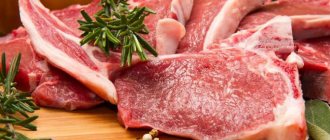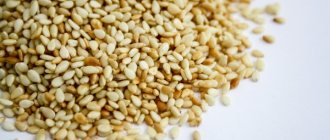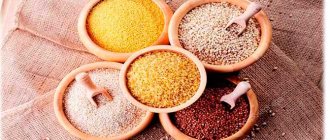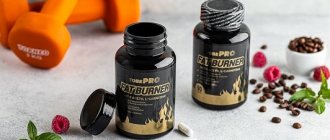Initially, feijoa was used in landscape design. Evergreen bushes were used to decorate garden plots, alleys and park areas. Today, the fruits of the tropical plant are actively used in folk medicine and for preparing unusual dishes. The special composition and caloric content of feijoa make it possible to include them in the diet for weight loss and treatment of children.
general description
The small genus Feijoa is a representative of the Myrtaceae family. It includes shrubs of three varieties, but only one of them is cultivated - Feijoa Sello.
A tree-like plant (shrub) can reach 4 meters in height. Its branches are covered with hard, oval-shaped leaves that retain their bright color throughout the year. The upper part of the leaf plate is painted green, the lower part is silver-gray. The trunk is covered with rough brown bark, and the branched root system actively grows in the top layer of soil, covering large areas so that the moisture-loving plant always has access to water.
The bushes become especially attractive during the flowering period. In May-June they are covered with bisexual flowers, the diameter of which is no more than 4 cm. Their petals are fleshy, edible, and have a sweetish taste. The color of the petals is white with pinkish splashes, and inside there are numerous long stamens of a purple hue. The buds grow singly on young branches or form lush inflorescences that delight the eye until the beginning of July.
Where does it grow
Civilized people became acquainted with feijoa not very long ago. The German botanist Friedrich Sello encountered this shrub in the middle of the last century when he was exploring the tropical forests of South America. The specific name feijoa was given by the name of the discoverer Sello. The shrub received its generic name in the 19th century after the director of the Brazilian Museum of Natural History, Johnny de Silva Feijo.
The bushes were brought to Europe in 1890, and 23 years later they ended up in the botanical gardens of Italy. From there, the plant spread throughout the Mediterranean countries, after which it reached the southern lands of East Asia.
Feijoa can take root in any region where winter frosts do not fall below -12 ° C, and the summer is hot. Thailand and South America are considered the homeland of this tropical beauty: Brazil, northern Argentina, Paraguay, Uruguay.
Today, feijoa is grown for harvest in the following countries:
- New Zealand;
- Turkmenistan;
- Australia;
- Vietnam;
- Italy;
- Russia (Crimea, Krasnodar region);
- Argentina;
- Cambodia;
- Indonesia;
- Chile;
- Singapore;
- Panama;
- Uruguay;
- Georgia;
- Laos;
- Malaysia;
- Azerbaijan;
- Brazil;
- Ukraine.
What kind of fruit is feijoa?
Feijoa is the fruit of large evergreen shrubs or trees native to South America, Argentina, Colombia, and Uruguay. The plant loves a subtropical climate and does not take root in the tropics at all. Feijoa was brought to Europe at the end of the 19th century. She has taken root well in the south of France. It was from here that feijoa came to the Black Sea coast of the Caucasus, to Yalta. Currently, it is cultivated in Transcaucasia.
Feijoa berries are large, with fleshy pulp. The shape of the fruit can be elongated, oval, round, depending on the variety. The peel is usually dark green, lumpy, and in some species with a yellow tint.
What does feijoa taste like?
Under the dense green skin of feijoa lies aromatic, juicy fibrous pulp. Its sweet-sour taste includes notes of kiwi, strawberry and pineapple. Between the pulp and the seeds there is a translucent acidic pulp.
Unripe feijoa fruits have a herbal taste and will not provide gastronomic pleasure. Overripe berries taste like rotten strawberries or frozen grapes.
If feijoa is consumed with the peel, you can feel the tartness. The astringent feeling is due to the presence of a large amount of minerals in it.
Calorie content
The berries of the evergreen shrub are increasingly found on store shelves. It is not surprising that exotic lovers who watch their figure are interested in how many calories are in feijoa. The kcal indicator per 100 grams of product depends on the processing method.
Feijoa has the following calorie content:
- fresh - 55.3;
- dried - 81;
- with honey - 200;
- jam - 193;
- marshmallow - 200.
How many grams are in the fruit
Some people mistakenly believe that feijoa is a fruit. In fact, these are large berries 2–5 cm in length, weighing up to 50 grams. In appearance they resemble unripe walnut fruits. The berries have juicy and fleshy pulp with the taste of sweet strawberries, tart kiwi and sour pineapple.
Inside the fruit you can see small seeds surrounded by a translucent pulp. The edible part of the berries is protected from the effects of the external environment by a dense, lumpy skin of a dark green or yellowish color. People often call feijoa “pineapple guava.”
Content of vitamins and microelements
Feijoa fruits contain vitamin A, vitamin C, vitamin E, B vitamins, a lot of iodine, potassium, calcium, phosphorus, magnesium, sodium, natural sugars, pectin substances, fiber, organic acids, essential oils, phenolic compounds.
Amino acids in the fruit are represented mainly by glutamic acid 0.182 g, aspartic acid 0.104 g, lysine 0.052 g, alanine 0.052 g, glycine 0.039 g, serine 0.039 g, leucine 0.039 g, arginine 0.026 g, valine 0.026 g, proline 0.026 g
Dietary properties
When ripe, the berries quickly deteriorate and cannot be transported, so they are collected unripe. It is better to buy hard berries in the store; in the refrigerator they will quickly reach a suitable state for consumption.
The pulp of ripe feijoa has a jelly-like consistency, which is considered the most useful product. The white color of the insides indicates that the berry is not yet ripe, and brown indicates spoilage.
Nutritional value and composition
Culinary experts are often interested in the proportion of feijoa fatty acids or nutritional value, that is, the content of proteins, fats and carbohydrates. Pineapple guava contains many vitamins and minerals essential for human health. These indicators per 100 grams of fruit pulp can be found in the following table.
| BJU | Quantity |
| squirrels | 0.7 g |
| fats | 0.4 g |
| carbohydrates | 15.2 g |
| Vitamins | |
| beta carotene | 2 mcg |
| B1, thiamine | 6 mcg |
| B2, riboflavin | 18 mcg |
| B5, pantothenic acid | 233 mcg |
| B6, pyridoxine | 0.067 mg |
| B9, folic acid | 23 mcg vitamin |
| C, ascorbic acid | 33 mg |
| E, alpha tocopherol | 0.16 mg |
| PP | 0.29 mg |
| K | 3.5 mcg |
| beta-cryptoxanthin | 3 mcg |
| Minerals | |
| calcium | 17 mg |
| potassium | 172 mg |
| phosphorus | 19 mg |
| sodium | 3 mg |
| magnesium | 9 mg |
| iron | 140 mcg |
| manganese | 84 mcg |
| zinc | 60 mcg |
| iodine | 35 mg |
| copper | 36 mcg |
The rich composition of the berry gives it beneficial and medicinal properties.
In addition to vitamins and minerals, feijoa contains:
- alimentary fiber;
- essential amino acids;
- saturated, mono- and polyunsaturated fatty acids.
Benefit
Feijoa fruits are high in iodine. A deficiency of this element is observed in many people, but it is very important for the smooth functioning of the body, especially for the thyroid gland. The substances present in the berry activate the growth and development of tissues, control the functioning of the cardiovascular and nervous systems, and also normalize hormonal levels.
Beneficial properties of feijoa:
- Antioxidants prevent the development of cancer cells and slow down the aging process.
- Replenishes reserves of substances important for health.
- Protects against colds and improves digestive processes.
- Improves immunity, the body begins to actively fight various diseases.
- Lowers blood pressure and cholesterol levels in the blood.
- Speeds up metabolism and is considered a good preventative against colds.
- Ensures uninterrupted operation of all body systems.
- Masks made from the pulp of such berries can provide good care for problem skin, and also smooth out wrinkles and saturate the epidermis with moisture.
- Has an antifungal and antibacterial effect.
When choosing food products, the fair half of humanity often pays attention to their harm and calorie content. Pineapple guava is perfectly absorbed by the body and goes well with vegetables and fruits in salads. Its medicinal and dietary qualities are highly valued among women who want to lose weight and take care of their health.
Why is it harmful?
Unfortunately, this nutritious fruit can bring not only benefits, but also harm.
When using it, it is important to consider some negative properties:
- The acids contained in tropical berries are quite aggressive. Their prolonged exposure to tooth enamel can lead to its destruction. Slightly weakened enamel can recover on its own; the main thing is not to brush your teeth immediately after eating feijoa, and also not to eat rough and hard foods. To neutralize the acid, it is recommended to rinse your mouth with a weak solution of clean water and soda.
- In rare cases, an allergic reaction can be observed; it occurs when certain components of the fetus are intolerant. Therefore, in order to avoid such a nuisance, you need to carefully read the composition of the product and start consuming it with small portions.
- An overdose of iodine can be harmful to health and disrupt the functioning of the thyroid gland.
- Do not eat unripe berries; they can be identified by their too tart and sour taste. They can lead to disorders of the digestive system.
- Pineapple guava has a high content of pectin substances, and they do not interact well with milk protein. Therefore, it is important to maintain a time interval of 40 minutes between consuming incompatible products.
There are also a number of diseases for which it is better not to eat feijoa.
The berry is contraindicated in the following pathological conditions:
- hyperthyroidism;
- problems with the gastrointestinal tract;
- nervous disorders;
- renal failure;
- high blood sugar;
- low cholesterol;
- high intracranial pressure;
- chronic liver disease;
- increased blood clotting.
Berry in folk medicine
Those who know about the properties of feijoa use it both as a tasty fruit and as a medicinal plant. Fresh berries remarkably strengthen the immune system, regulate the processes of the gastrointestinal tract, have anti-sclerotic properties, etc. For therapeutic and preventive purposes, the use of feijoa fruits helps with diseases of the thyroid gland, since it is comparable to seafood in content Yoda.
A decoction is made from feijoa leaves, which promotes wound healing and is used in the treatment of periodontal disease, stomatitis and as an antiseptic.
But oil is extracted from the peel, which perfectly copes with dermatitis and hair loss. It is even used for the prevention and treatment of respiratory and seasonal diseases. The fruits have beneficial properties for the elderly generation.
Feijoa is not only a useful discovery, but also a beautiful flowering bush. At first it was used for decorative purposes in eastern countries. But when people became aware of its medicinal properties, the berry became a common food and health product. Proper consumption of feijoa berries will help you stay healthy longer and maintain beauty.
Useful Application
The tropical fruit has many beneficial and medicinal properties, which are explained by its rich composition.
In medicine
In the pharmaceutical industry, green berries are used in the manufacture of dietary supplements (dietary supplements). Homeopathic doctors value the fruit for its high content of iodine and vitamin C, so they recommend it to their patients for the treatment of atherosclerosis and the thyroid gland.
The essential extract is actively used for dermatological diseases as a natural anti-inflammatory agent. English scientists have conducted many studies and proven that feijoa oil has an effective antimicrobial effect and copes even with fungal strains. Experts from Italy have confirmed its antitumor properties.
Pineapple guava is also respected by traditional healers:
- In winter, it is useful to drink feijoa infusion to prevent colds and infectious diseases. For this, 5 tbsp. spoons of dried fruits are poured with 400 ml of boiling water and left for 24 hours. The finished drink is taken 100 ml 3 times a day half an hour before meals.
- Brew two tablespoons of feijoa petals in a glass of boiling water and drink before meals. This tea will help get rid of nervous disorders and depression.
- To treat the thyroid gland, eat 300 grams of fresh pulp every day. The course of treatment is three weeks.
For children
Feijoa should not be given to young children. The fact is that the digestive system of babies is not able to break down some of the compounds contained in the fruit, and this can lead to unpleasant side effects.
During pregnancy and lactation
Pregnant and breastfeeding women can include pineapple guava in their diet as iodine and folic acid are essential for healthy fetal development. In addition, it contains substances that can saturate the body with important elements, improve digestive processes and protect against colds.
During the feeding period, it is important to observe moderation, because new foods often lead to diathesis in infants. You can consume this berry in any available way.
List of the most popular and convenient:
- The fruit is cut in half and the pulp is removed with a spoon.
- Grind and add to your favorite dishes, for example, salads, baked goods.
- You can make compote or puree from the berries.
- Gourmets cut feijoa into thin slices, dry it and add it to tea.
- The peel is also very useful; you can simply chew it periodically or grind the unpeeled fruits in a blender. This dish is called “raw jam”.
For diabetics
The high sugar content makes pineapple guava unavailable for diabetics. Therefore, it is better to stop using it or consult your doctor in advance.
For weight loss
The subtropical berry is considered an excellent remedy for cleansing the body and healing the thyroid gland. In the fall, it will help you lose a few kilograms and strengthen your immune system.
The fruit contains a lot of pectin, it is able to remove metabolic products, toxic substances, pesticides, salts and heavy metals. Feijoa gently cleanses the gastrointestinal tract without washing out “good” bacteria or causing dysbacteriosis.
For weight loss, the following recipes for processing berries are usually used:
- 0.5 kg of fruits are crushed using a meat grinder and mixed with 500 g of granulated sugar. The finished jam is distributed into sterilized jars and closed with clean lids. Since the dish has not been cooked, it does not last long - only two weeks in the refrigerator.
- The berries are finely chopped and poured with boiling water in a ratio of 10 tablespoons of the product to 4 glasses of water. The drink is infused in a thermos for about 8–12 hours and drunk every morning after waking up.
- The berry is suitable for preparing a healthy dessert that even gourmets will enjoy. Several feijoas are peeled and passed through a meat grinder, then mixed with a small amount of nuts and ground again in a blender. The mass is combined with 2-3 tablespoons of natural honey and served.
In cosmetology
This tropical delicacy is used not only for food purposes; it nourishes and cleanses the skin well. It is especially useful to prepare masks from such a product during the cold season.
Popular recipes:
- For dry and normal dermis: ¼ cup of feijoa puree combined with the yolk of one egg, 1 tbsp. l. olive oil and two tbsp. spoons of cottage cheese. The mass is ground until smooth, after which it is applied to the face and décolleté. After 20 minutes, wash off the product with warm water; for greater effect, it is recommended to use it 3 times a week.
- For oily people: add a tablespoon of lemon juice and camphor alcohol to ½ cup of chopped berries. Keep the mask on the skin for 15 minutes and apply twice a week.
- For the fading one: art. a spoonful of oatmeal is poured with a decoction of chamomile, then combined with 2 tbsp. l. feijoa puree and 20 drops of almond oil. The mask is applied to the face, after 20 minutes it is removed and the skin is lubricated with a nourishing cream. To get results, this product must be used every two days.
- For hands: mix the pulp of tropical berries and olive oil in equal proportions, add a small spoon of honey. Massage onto the skin and hold for 20 minutes, rinse, then wipe your nails and hands with lemon juice.
Harm of feijoa
Contraindications to the use of feijoa are:
- children under 3 years of age;
- tendency to food allergies;
- exacerbation of gastrointestinal diseases;
- diarrhea, flatulence, constipation;
- unripe fruit can cause severe food intoxication;
Read: Calorie content of boletus mushrooms
- due to the significant iodine content, the product is excluded from the diet for hyperthyroidism;
- limit the consumption of feijoa for diabetes;
- During pregnancy and breastfeeding, feijoa is eaten in minimal quantities and only as prescribed by a doctor.
Dish recipes
The fruits are often used to prepare unusual dishes. Feijoa goes well with fruits and vegetables, and is often complemented with fish and meat. In the confectionery industry, the pulp is processed and used to make candy fillings. At home, it is ground with sugar to obtain jam, jam or a preparation for vitamin compote.
With beets and nuts
The salad will be an excellent addition to a holiday table or diet menu.
Ingredients:
- beets - 400 g;
- walnuts - 100 g;
- feijoa - 150 g;
- vegetable oil - 3 tbsp. spoons;
- salt - one pinch.
A 100-gram serving of the dish has an energy value of 302 kcal.
Cooking instructions:
- Wash the beets, place in a saucepan with cold water and cook for two hours. In this way, it will not be possible to quickly bring the root vegetable to readiness, but it will retain almost all the vitamins.
- Peel the cooled beets and chop on a coarse grater.
- Cut the tropical fruits into halves and scoop out the pulp with a dessert spoon, then cut into medium pieces.
- Remove the shells from the nuts and finely chop them with a knife.
- Combine the ingredients, add salt and oil, mix well.
Pork with feijoa
This delicious meat salad is easy and simple to prepare; even novice cooks can handle this recipe.
List of ingredients:
- pork pulp - 300 g;
- exotic berry - 150 g;
- lime - half;
- almonds - 30 g;
- flour - 2 tablespoons;
- onion - one turnip;
- vegetable oil;
- soy sauce.
Feijoas go well with meat products; such dishes will diversify your daily diet.
Cooking method:
- Wash the pork, dry it with a paper towel and cut into thin slices.
- Dip them in flour and fry in well-heated vegetable oil for 5 minutes.
- Cut the lime and berries into slices, finely chop the onion and add to the meat, cook for another 3 minutes.
- Remove from heat and season with soy sauce.
- Pour boiling water over the almonds and leave for 10 minutes.
- Place it in a bowl of cold water.
- After five minutes, remove the peel from the nuts; it will come off well.
- Cut them into thin slices and use to decorate the dish.
Tincture
Ripe feijoa tastes like a mix of kiwi, pineapple and strawberries. These notes manifest themselves well in alcohol, so a pleasant tincture is prepared from such fruits at home. If desired, you can enrich the taste by adding fresh cranberries to the drink.
To make alcohol, it is important to use ripe or overripe berries without rot or spoilage. Only a high-quality base is suitable for infusion, for example, highly purified moonshine, luxury vodka or ethyl alcohol diluted with clean water.
Components:
- feijoa - 300 g;
- alcohol - half a liter;
- cranberries - 100 g;
- sweetener (sugar or honey) - 100–150 g.
Cranberries will add tartness and interesting sourness to the product. Instead, you can take strawberries, strawberries or Victoria - this option will appeal to the fair sex. You shouldn’t mix the berries; if you want to try everything, it’s better to make three different tinctures.
Recipe:
- Rinse the feijoa well in warm water and, without peeling, cut into small pieces.
- Grind the cranberries in a blender until a liquid and homogeneous mass is obtained.
- Place the prepared ingredients in a container for infusion, add sugar and pour vodka.
- Close the lid tightly and place in a dark place for 14 days. Shake the jar thoroughly once a day.
- Strain the finished tincture through a piece of gauze, squeeze the cake well.
- Taste the drink; if necessary, add sugar or dilute with water to reduce the strength.
- Pour into glass bottles and seal carefully. Over time, the tincture may become cloudy; this will not affect the taste, but you can additionally filter it through cotton wool.
This drink can be stored away from direct sunlight for up to 12 months.
How to use
There are many recipes and tips for eating feijoa, the easiest option is to eat it raw. After all, its taste is unusual and self-sufficient. To do this, wash the berries, cut them in half and scoop out the pulp with a spoon. There is no need to remove the seeds from the pulp; they will not interfere with the characteristic taste of feijoa. Pay attention to the color of the pulp: if it is dark, the fruit is overripe and should not be eaten. Raw feijoa can be eaten one after another because of its taste, but you should not overdo it.
In addition to eating feijoa fresh, many desserts are prepared from it, such as ice cream, yogurt, jam, and jam. The fruits are used as a filling for pies, added to compotes, lemonades and fruit salads, and wine is made from them.
A tasty and equally healthy way to prepare feijoa berries is canning.
You can make jam from feijoa berries, for this you need 300 g of sugar per 1 kilogram of crushed berries, you can add cinnamon, citrus fruits, mint, cloves to taste. Boil and roll into jars.
There is a way to make jam without heat treatment: for it, chop 1 kg of fruit and mix with 1 kg of sugar, pour the mixture into jars and store in the refrigerator.
You can also cook compote, make juice and preserve it in jars. Delicious marshmallows, candied fruits and marmalade are prepared from feijoa. But it is better to dry the unused peel, then add it to tea, jams and sauces.
Recipe for feijoa tincture with cranberries
Type of dish: drink;
Number of servings: 10;
Preparation time: 14 days.
Nutritional value per 100 g:
- Calories: 146 kcal;
- Proteins: 0;
- Fats: 0;
- Carbohydrates: 11;
Difficulty of preparation: easy;
Ingredients:
- Feijoa: 200 g;
- Cranberries: 80 g;
- Water: 100 ml;
- Vodka: 350 ml;
- Sugar: 50 g.
Step-by-step cooking instructions:
- Cut ripe or overripe fruits together with the peel;
- Grind the cranberries into a puree;
- Prepare the syrup by boiling water and sugar;
- Place all ingredients into a jar and stir;
- Seal the jar hermetically and store in a dark place at room temperature, shaking the jar regularly once a day. When 12-14 days have passed, strain the drink and pour into a bottle.
How to choose and store correctly
It is important to know how to choose the right fruit, because this affects not only the taste, but also the usefulness of the berry.
It is worth paying attention to the following points:
- The peel is dark green, matte and lumpy. The presence of bright green spots, a glossy shine and the absence of wrinkles indicates that the feijoa is not yet ripe.
- Fruits with dense and white flesh should be left until ripening.
- If the fruit does not have a stalk, it means that it was cut from the tree when it was not ripe.
- Dark spots on the peel indicate that the fruit has begun to deteriorate.
- The size of the tropical delicacy depends on the variety and does not indicate maturity.
Fresh, ripe berries can be stored in the refrigerator for no more than one week, so it is better to eat them immediately rather than put them off for later. You can also grind it with sugar to make jam. Raw can be stored for about two weeks in the refrigerator, while heat-treated meat must be eaten within a year.
Fruit selection
Feijoa appears on store shelves in late autumn. Due to the fact that the fruits are picked unripe for better transportation, pay attention to their ripeness. If the berry is unripe, let it rest for several days in a cool place. When choosing feijoa, pay attention to:
- no stains on the peel;
- uniform dark green color;
- presence of wrinkles;
- color and uniformity of pulp;
- soft jelly-like consistency of the pulp;
- pulp with sourness and a slight smell of iodine;
- sun spot may be present.
Berry varieties
The most common feijoa varieties are:
- "Andre": the fruit can reach 120 g with a dark green peel, very juicy with a delicate taste and sourness, there are few seeds and they are small. The berries have a distinct smell.
- “Besson”: large fruit (120 g), thin green peel with a reddish spot. The pulp has small seeds, very juicy, less sour.
- “Coolidge”: fruits up to 60 g, the peel is wrinkled, dark green, and does not have such a strong smell as the previous ones.
- “Light”: ripe fruits are light green in color, weigh 60 g each, and taste like strawberry.
Growing at home
Many lovers of indoor plants are thinking about growing feijoa at home. This will allow you to get delicious fruits directly from the bush, as well as admire the beautiful flowering.
Rules for caring for a tree:
- In the summer, the tropical plant can be placed on an open balcony or terrace; it can easily tolerate 30 degree heat, although experts recommend keeping it cool (20-22°C). In winter, the bush goes into hibernation, so it needs to be moved to a room with a temperature of 10–14 degrees. It is worth remembering that the flower does not like direct sunlight, as it can burn its crown.
- On dry and hot days, it is necessary to spray the feijoa foliage and the soil in which it grows. Watering is carried out after the earthen ball dries out by ¼, since the bush loves moisture very much.
- Feijoa loves frequent feeding; for this, it is fertilized every two weeks with nitrogen-based liquid formulations.
- The plant needs a certain soil; it is prepared from turf, leaf soil, peat, humus and river sand. All components are taken in equal proportions and calcined in a frying pan with a thick bottom.
- If you plan to grow the tree for the purpose of producing berries, it is important to remember that feijoa flowers are cross-pollinated, so it is worth having at least two bushes. However, self-pollinating hybrids have been bred, these include Crimean early and Nikitsky aromatic.
Cosmetic care with feijoa
The healing properties of feijoa also extend to cosmetology. The right combination of ingredients will help with:
- fine wrinkles;
- fatigue, dull skin;
- age spots;
- dry skin.
To prepare the mask, you need feijoa puree and additional ingredients, depending on what skin type it is intended for. For wrinkles - honey and olive oil; for fatigue - sea buckthorn puree, crushed oatmeal; for pigment spots – starch and a couple of drops of lemon juice; for dry skin - cream. Apply the mask in a thick layer for 20 minutes - then rinse with warm water. It is advisable to repeat 3 times a week.
Feijoa hydrolate or flower water obtained by evaporating the fruit is a medicinal beauty product. The results of its use include: freshness of tired skin, evening out complexion, increasing elasticity and tone of the skin, smoothing out wrinkles, eliminating rashes and preventing skin aging. The product can also be used for hair, it will give shine and strength to the hair. This flower water is used as a facial tonic, used in dry masks, as eye patches, and as cosmetic ice, as a hair spray.
With regular use of hair masks containing feijoa, the hair gains shine and thickness, small particles and pulp polish the hair. A decoction of feijoa peel will help cope with excessive oiliness of the scalp and cure dandruff.
Reviews
I consumed one feijoa fruit for a month, which helped a lot with iodine deficiency, I didn’t even have to take pharmacological drugs.
Alexander, Tula.
When I was on a fruit diet, I bought feijoa to diversify my diet. It is very easy to eat, just cut it in half and scrape out the pulp with a spoon.
Angela, Moscow.
The doctor advised to include feijoa in the menu, as it contains a lot of vitamins and microelements. I didn’t really like the taste of the fresh fruit, it was reminiscent of strawberries and kiwi, but I also felt the aroma of juniper, which is not very appetizing. But then I found a very interesting recipe: the “butts” are cut off from the berries, cut into circles and poured with liquid honey. After just 10 minutes the fruit softens and becomes very tasty.
Lyudmila Ivanovna, Tomsk.
I really liked these tropical fruits, I’ve been buying them since they were brought to our supermarkets. It comes in handy when you want fruit, but are tired of all sorts of apples and oranges.
Pavel, Krasnoyarsk.
What are the benefits of feijoa berry for the body?
Thanks to the above rich composition, this fruit has a number of beneficial properties for the human body:
- 100 g contains a 53-day dose of iodine. Even seafood does not contain such amounts of this microelement, which is important for the functioning of the thyroid gland. This iodine content, together with other substances, helps normalize metabolism;
- improves immunity as it contains a lot of vitamin C;
- It is recommended to use it for vitamin deficiency, as it contains a wide variety of vitamins;
- many substances contained in this fruit have antioxidant properties;
- has a preventive effect against cancer;
- useful for atherosclerosis, hypertension;
- improves blood counts (lowers cholesterol, increases hemoglobin);
- has a beneficial effect on digestion:
- has an anti-inflammatory effect;
- stimulates mental activity.
Benefits for women
These fruits bring the following benefits to the female body:
- have a rejuvenating effect on the body thanks to antioxidants;
- help to lose extra pounds, as they contain few calories, normalize metabolism and stimulate digestion;
- improve hormonal levels, therefore have a beneficial effect on libido and the reproductive system;
- are an excellent cosmetic product in face masks (rejuvenation, whitening).
Feijoa can be eaten by pregnant women. Iodine, group of B vitamins, iron and other substances contained in the berry have a positive effect on the formation of the fetus. At the twelfth week of development, the thyroid gland begins to form, and eating feijoa will be most beneficial. But don’t overuse it—everything is good in moderation.
It will also be useful for nursing mothers, but it is better to refrain from using it for the first three months after birth in order to avoid allergies in the baby. You should first include it in the diet in small portions and observe the baby’s reactions. If there are no allergic manifestations, then you can increase the dose to half a fruit per day, no more.
Benefits for men
Feijoa will also be useful for men due to the following properties:
- increases libido;
- improves the functioning of the reproductive system;
- is the prevention of prostatitis, and its oncoprotective properties will be useful in the presence of prostate adenoma.










